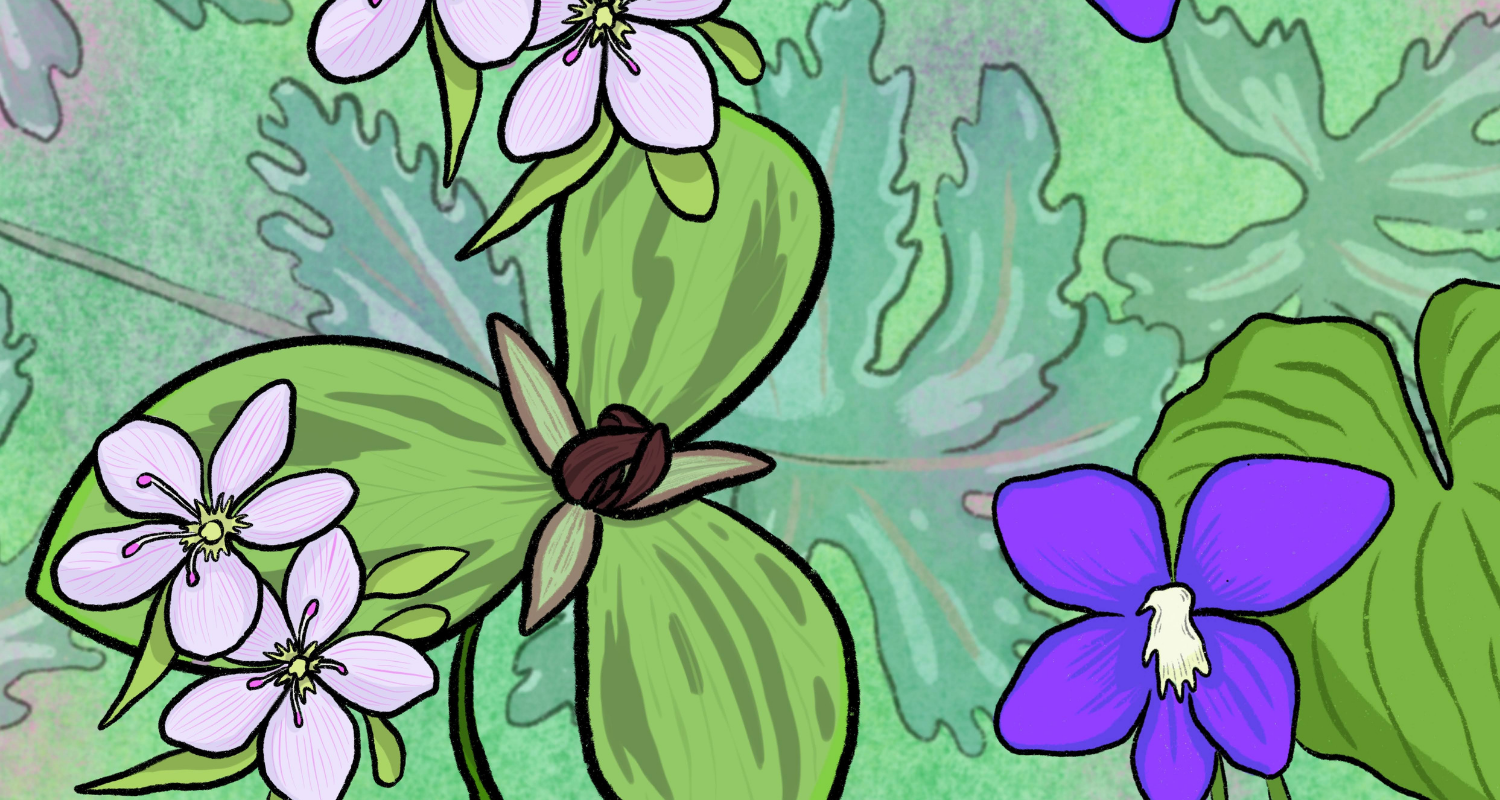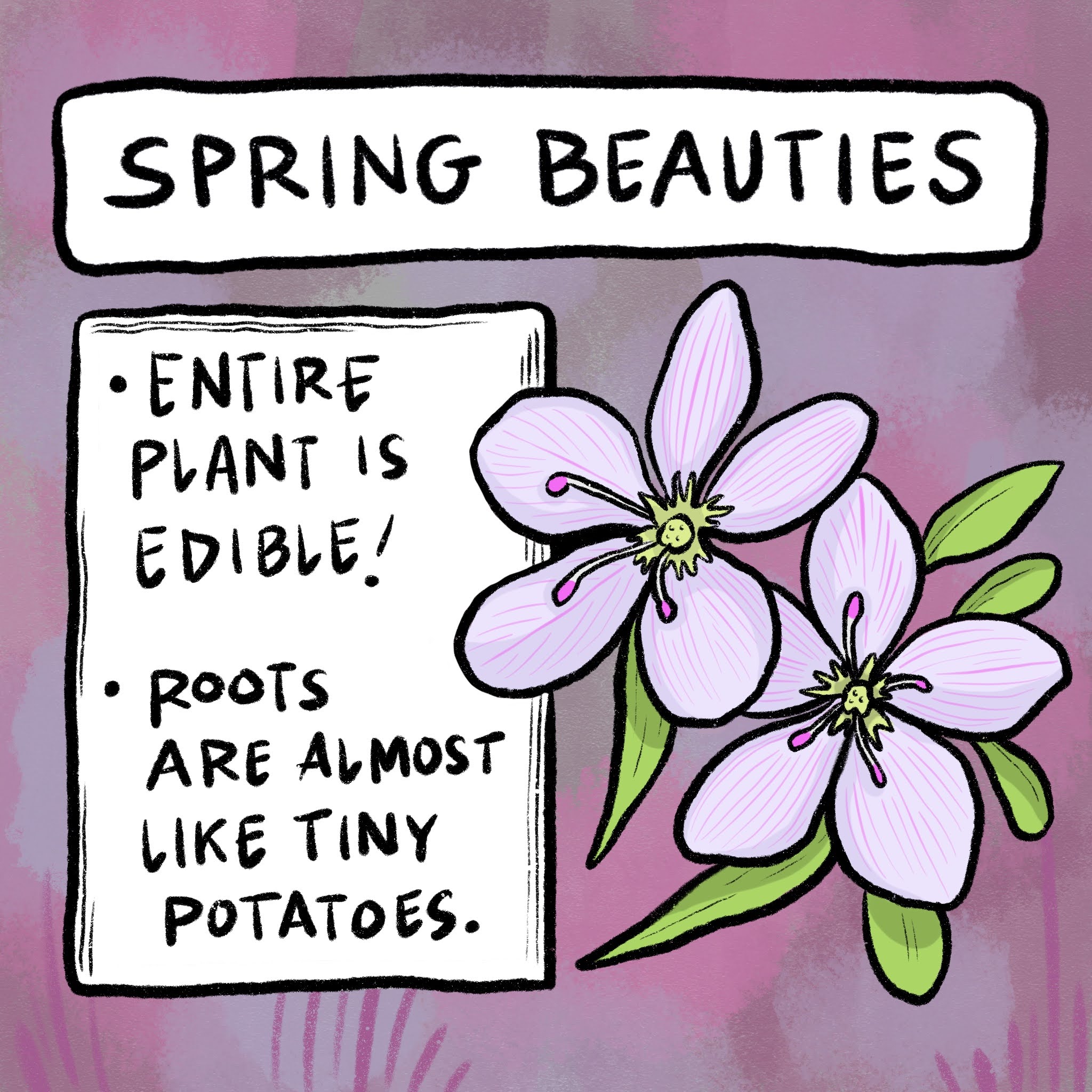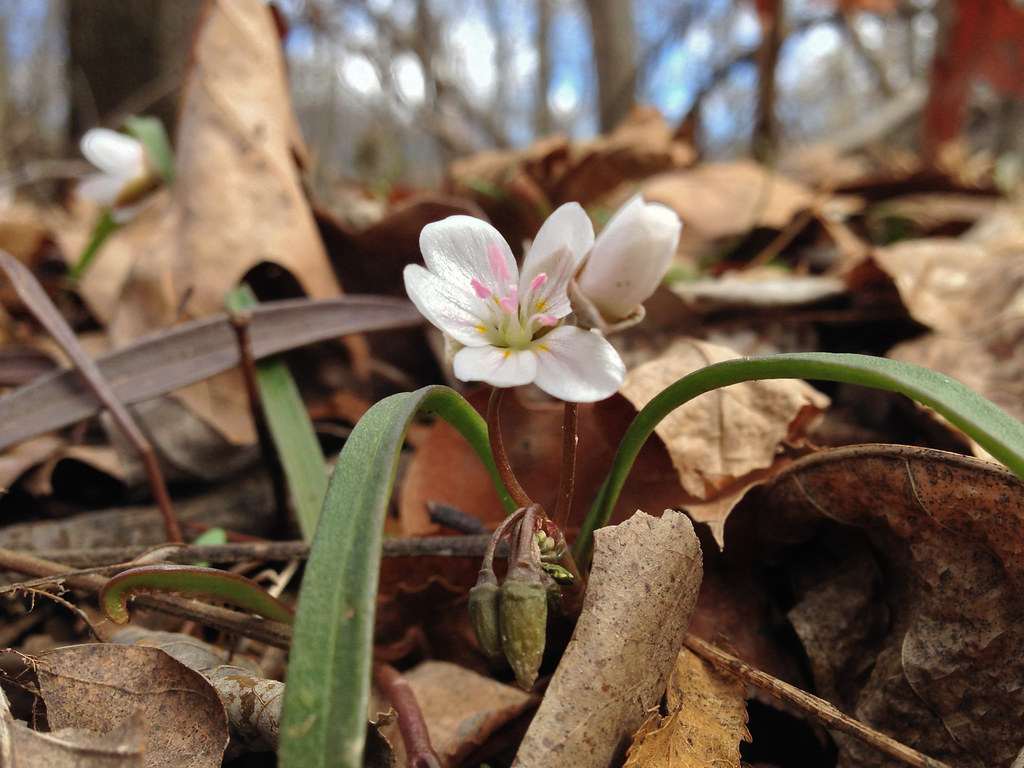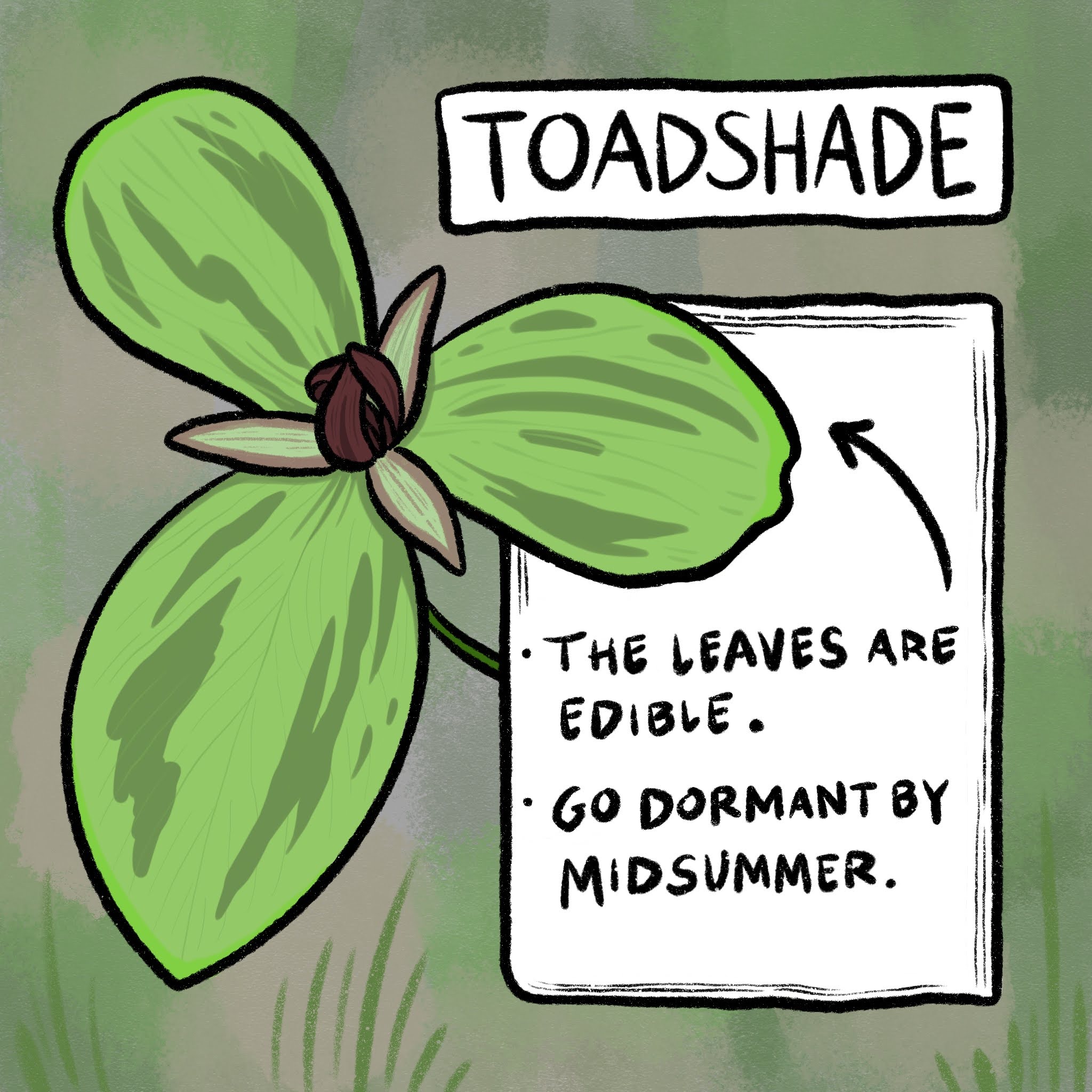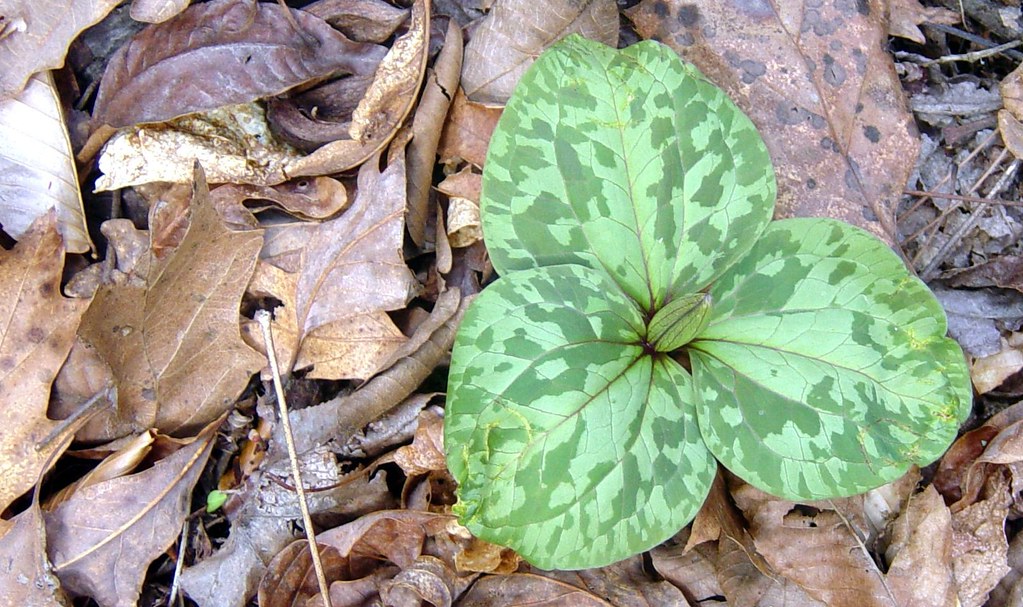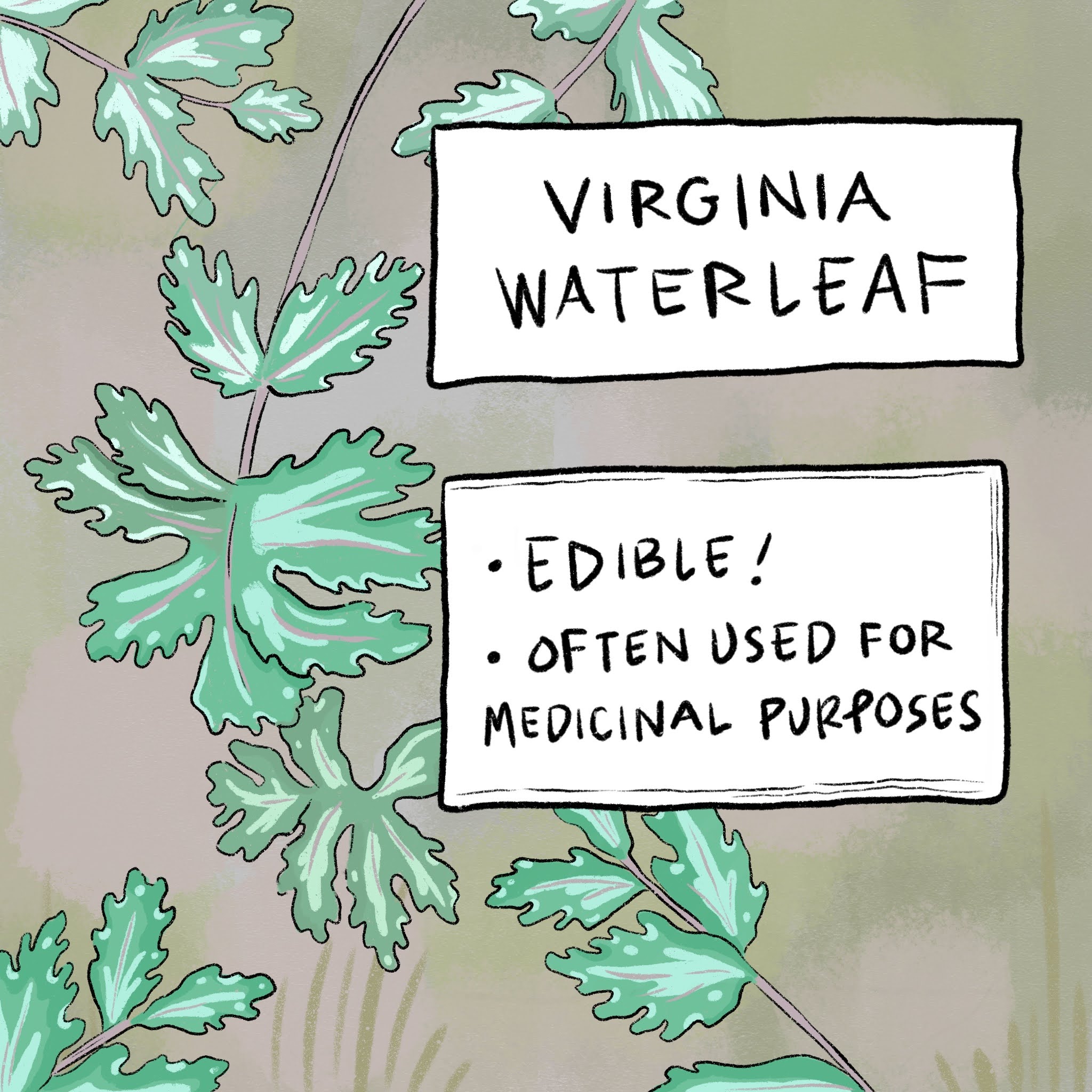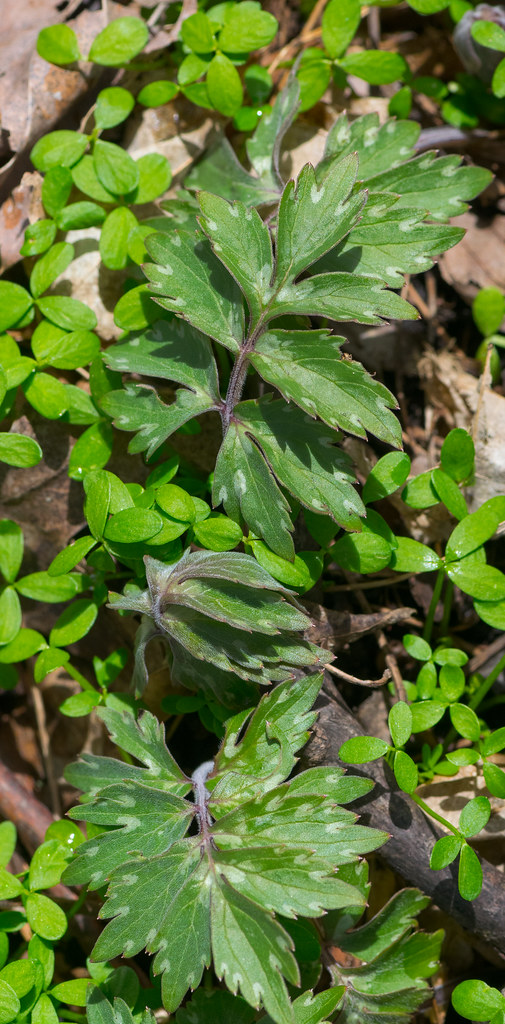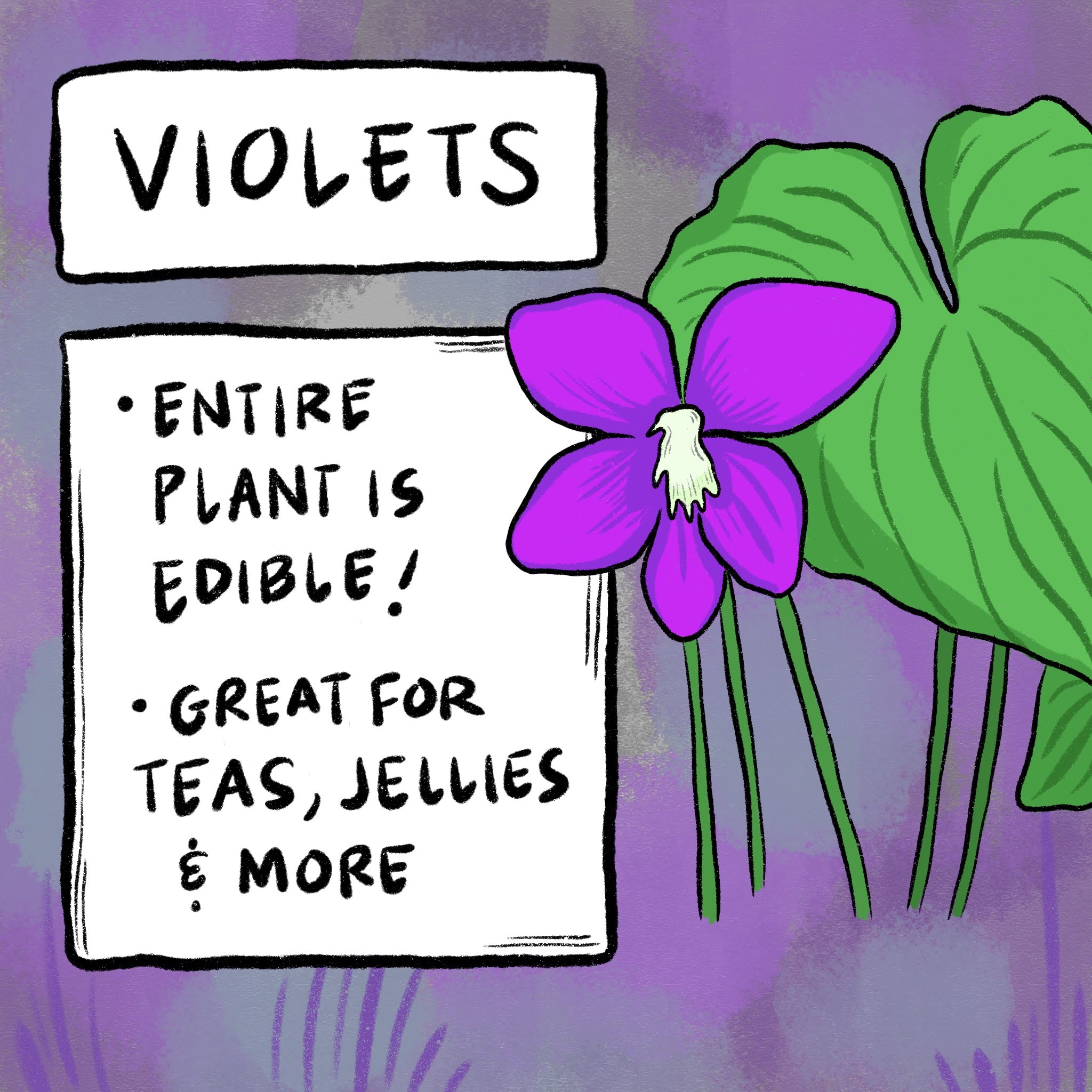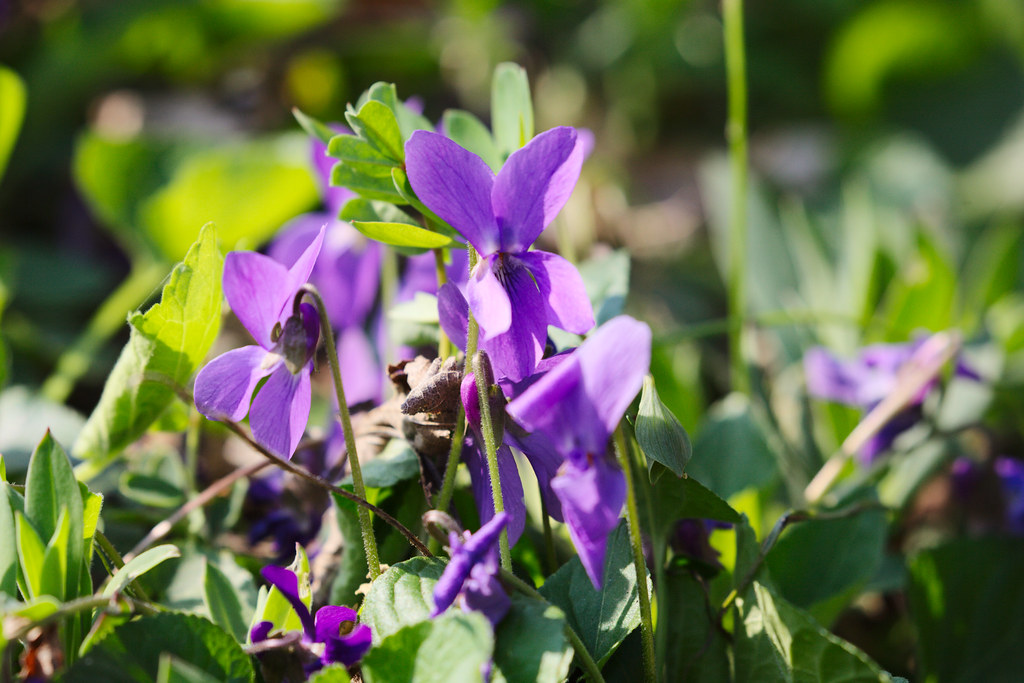As we spend more time outdoors this spring, take a look around to see if you can identify any of these common native plants:
Spring Beauties
Spring beauties are native plants that can be found in moist, partly-shaded wooded areas and are typically 4 – 12 inches tall. This edible plant is considered an herb and often grows in large patches. Its tuberous roots have a sweet, chestnut-like flavor. When identifying these plants in nature, look for loose clusters of pink or white flowers with dark pink stripes. They will also have smooth, grassy leaves on its slender stem.
Toadshade
April is the perfect time to look for toadshade plants, which are part of the lily family. These plants are known or having a 4 – 12 inch stem with three broad, oval leaves. In the center of the plant, you’ll see a dark, greenish-purple berry. You can look for toadshade plants in woodlands and along floodplains and river banks. Young toadshades can be eaten raw or cooked; they can be added to salads and taste similar to sunflower seeds.
Virginia Waterleaf
You can find Virginia Waterleaf plants in moist, wooded areas along streams and creekbeds from mid-to-late Spring. This plant has deeply-lobed leaves, bell-shaped flowers, and and long, hairy stems. If you like to forage, its leaves can be consumed raw or cooked, and make a great addition to salads, sandwiches, and baked goods. Virginia waterleaf plants have also been used to help cure dry lips and sore mouths by chewing on their roots.
Violets
Violets can be found in the late winter and early spring, and are quite easy to find as they are usually the first flower to pop up once the seasons change. Violets can typically be found in shady, wooded areas with rich soil. They can be identified by their dropping purple flowers with heart-shaped leaves. Both its leaves and blossoms are edible and extremely high in vitamin C!
Disclaimer: Identifying features listed in this article are meant as guidelines only. Identification and use of wild plants require particular care and attention. Never eat anything unless you are absolutely sure that it is edible after cross-referencing sources and consulting with experienced foragers. The information provided is not intended as a substitute for medical advice, diagnosis, or treatment. Make sure you are harvesting from non-polluted sources, away from roads, and where no pesticides or other contaminants may have been used.
References
1 “Claytonia virginica, Billy Goat A, 3/22/12” by FritzFlohrReynolds is marked with CC BY-SA 2.0.
2 “Toadshade trillium unopened flower bud” by Martin LaBar is marked with CC BY-NC 2.0.
3 “Virginia Waterleaf (Hydrophyllum virginianum)” by wackybadger is marked with CC BY-SA 2.0.
54 “Violet” by www.holgersbilderwelt.de is marked with CC BY-ND 2.0.
• Natalie Kovacs is an illustrator under the moniker Shapelessflame. She has a bachelor’s degree in English literature and a minor in graphic art from Carlow University of Pittsburgh. In her spare time, you’ll find her frolicking through the woods, reading and collecting countless books, crowd surfing at concerts, or testing out new vegetarian recipes. She lives in Bethesda, OH with her husband, son, and their four mischievous cats.


